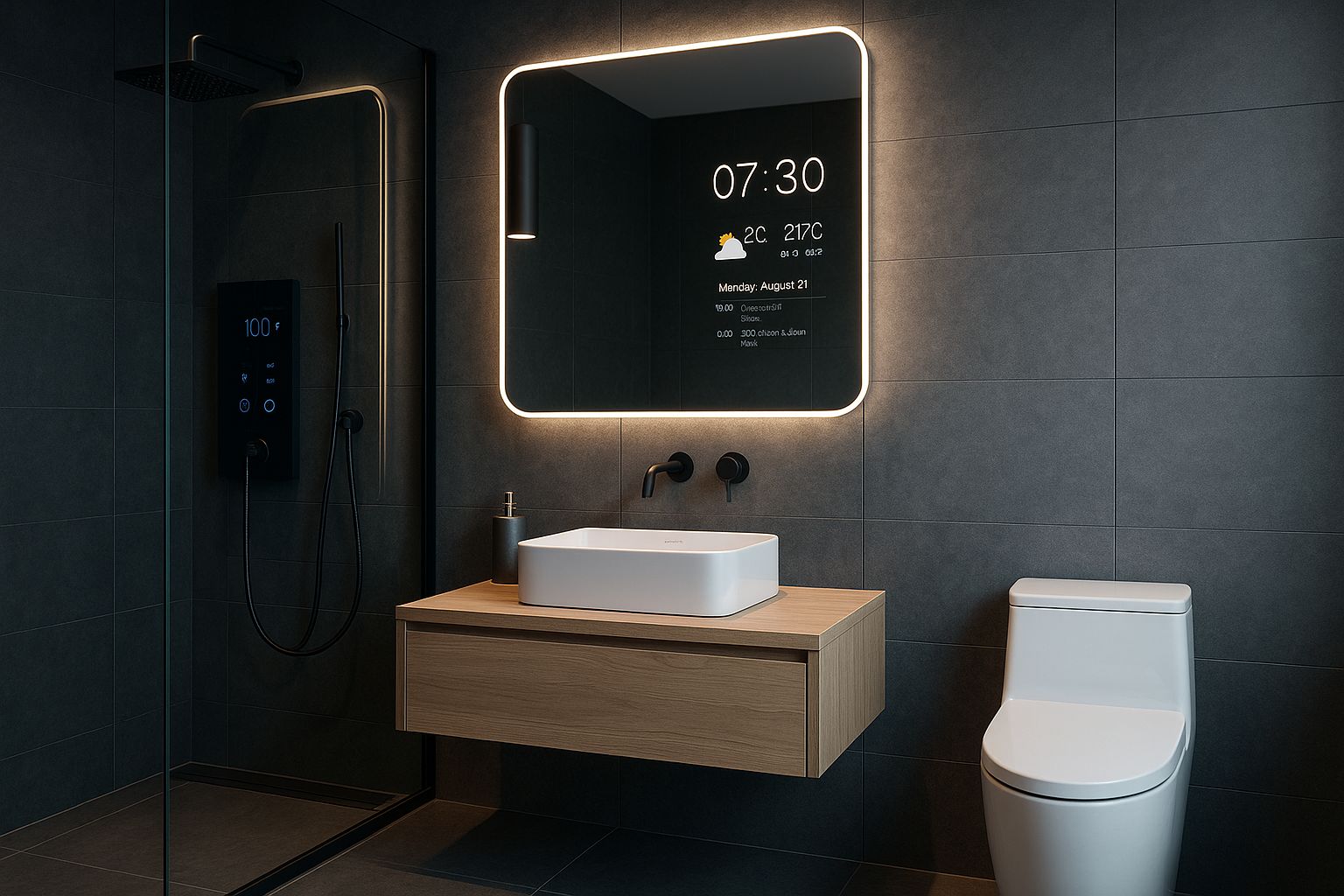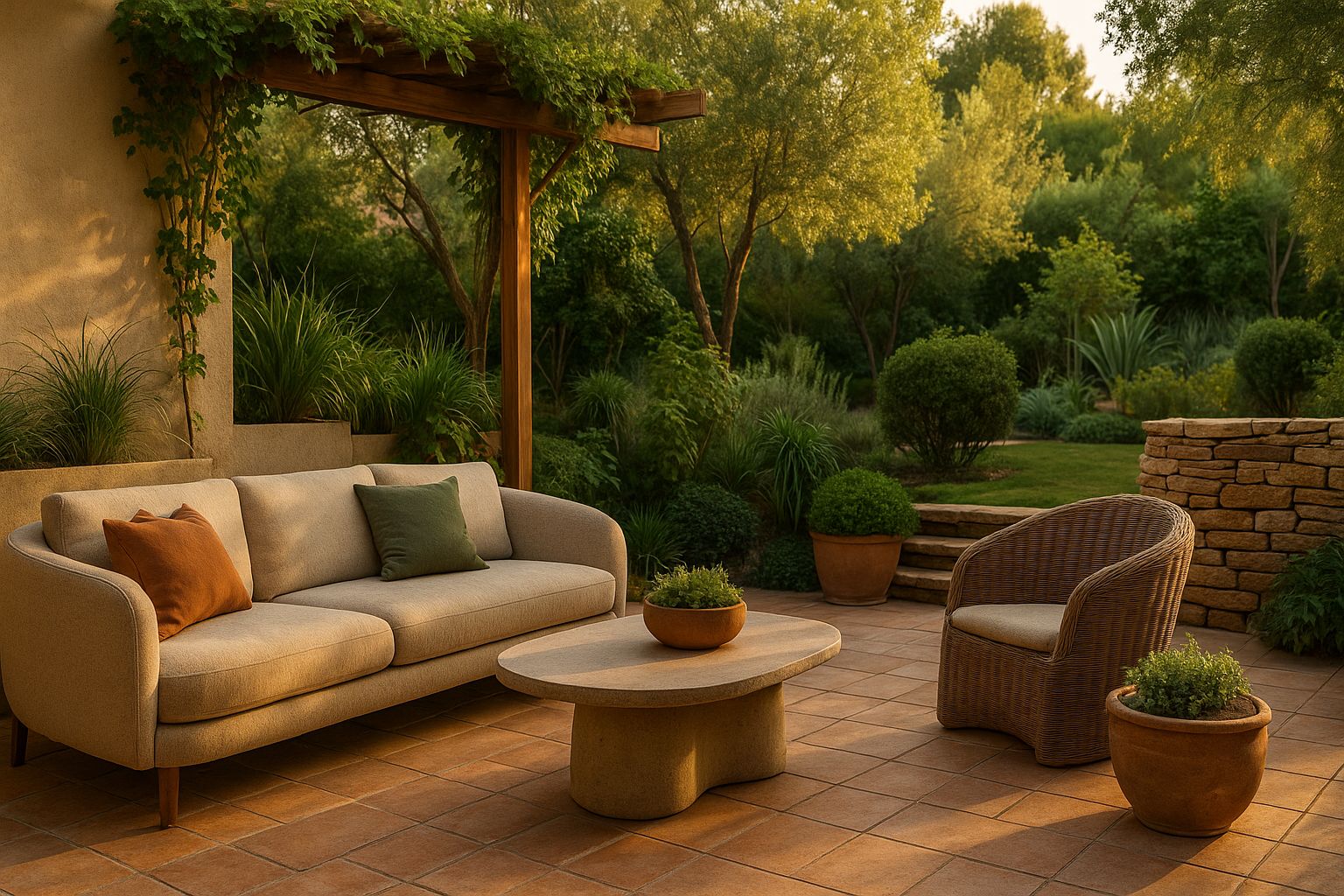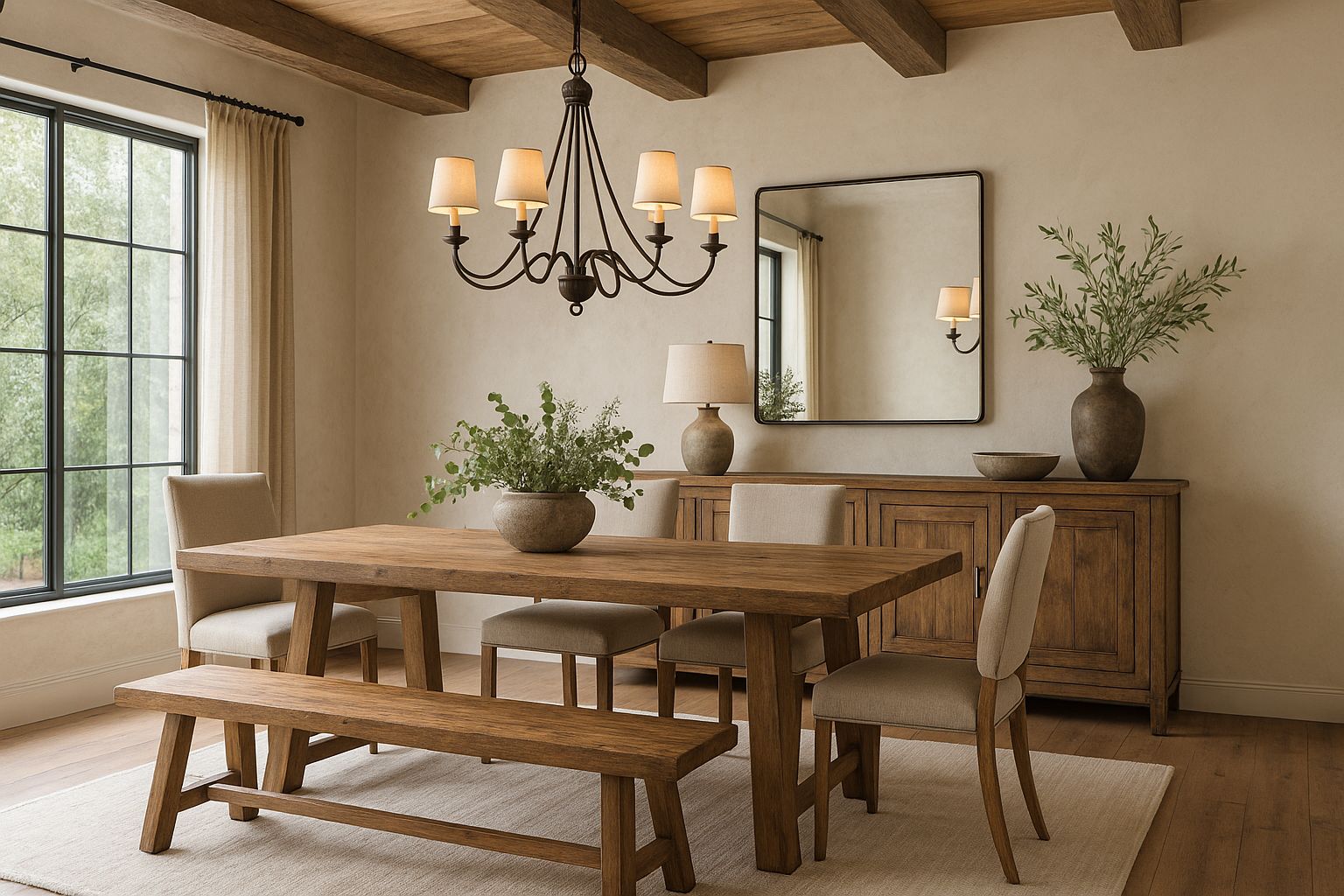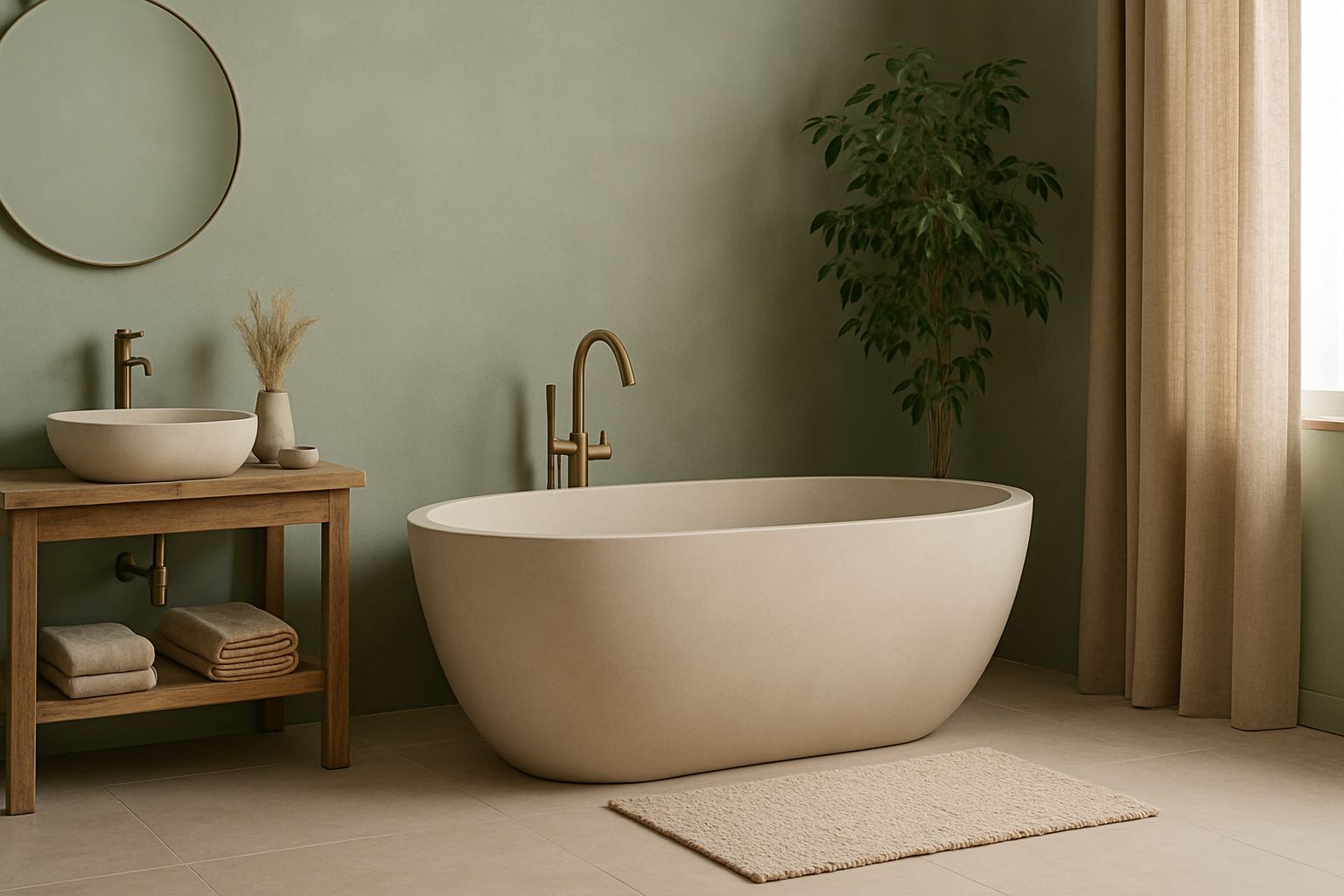The modern home is evolving at an unprecedented pace, and one of the most exciting areas of innovation is the bathroom. No longer just a functional space, the bathroom of 2026 is poised to become a high-tech sanctuary of comfort, efficiency, and wellness.
Smart bathroom technology trends are reshaping how we interact with water, manage our health, and design personal spaces. From intelligent showers to voice-activated controls, innovations in this sector are enhancing daily routines and promoting sustainability.
In this comprehensive guide, we’ll explore the latest smart bathroom technology trends for 2026 — offering a clear view of what’s here, what’s coming, and how these advancements can elevate your bathroom experience.
Voice-Activated Controls
Voice control is now a cornerstone of smart home integration, and it’s making its way into the bathroom with stunning results. Consumers increasingly demand hands-free solutions that blend convenience with hygiene.
How Voice-Activated Bathrooms Work
Smart bathrooms utilize built-in microphones connected to popular voice assistants like Amazon Alexa, Google Assistant, or Apple Siri. These systems link to Wi-Fi and are often part of an integrated smart home ecosystem.
What You Can Control with Your Voice
- Lighting: Adjust brightness and color temperature with a simple command.
- Water: Start, stop, and regulate the temperature of showers and faucets.
- Music & Media: Stream podcasts, playlists, or news updates.
- Mirrors: Display weather, calendar events, or skin analysis data.
- Toilets & Bidets: Open/close lids and initiate flushing.
Privacy & Security Considerations
As with any connected device, privacy is key. Modern systems now feature voice fingerprinting, encryption, and local processing to ensure that sensitive conversations aren’t shared outside the home.
Real-World Example
A 2025 study by Smart Home World reported that 62% of new luxury bathroom remodels included voice control features — a trend expected to grow further by 2026.
Smart Showers
Smart showers are redefining the concept of a personalized bathing experience. These systems deliver precision control over temperature, flow, and even aromatherapy, enhancing both efficiency and well-being.
Key Features of Smart Showers
| Feature | Description | Benefits |
| Programmable temperature | Set exact temperature preferences | Avoid scalding, improve comfort |
| Flow control | Adjust water pressure to suit mood or need | Reduce water waste |
| Voice/app control | Operate via smartphone or voice command | Convenience & hygiene |
| Preset profiles | Create profiles for each family member | Personalization |
| Aromatherapy infusion | Diffuse essential oils during shower | Wellness & relaxation |
Wellness and Fitness Integration
Leading smart showers now sync with fitness wearables such as Apple Watch or Fitbit. Post-workout settings can include muscle-relaxing temperatures and calming aromatherapy blends.
Energy and Water Conservation
Water scarcity concerns are driving innovation. Many smart showers come with real-time usage feedback, helping households reduce consumption by up to 30%, according to WaterSense Alliance.
Notable Brands & Models
- Kohler DTV+ Smart Shower
- Moen U by Moen Smart Shower
- Grohe SmartControl
These products are setting the standard for eco-friendly and luxurious bathing in 2026.
Intelligent Toilets
Once a novelty, intelligent toilets are now central to the modern smart bathroom. These high-tech units go far beyond automatic flushing, offering a suite of features aimed at hygiene, comfort, and even health monitoring.
Advanced Features of Smart Toilets
- Self-cleaning: UV light sterilization and automated bowl cleaning
- Touchless operation: Automated lid opening, closing, and flushing
- Heated seats: Adjustable temperature settings for optimal comfort
- Built-in bidet: Customizable spray patterns and temperatures
- Air deodorizer: Integrated odor neutralization
- Health monitoring: Sensors analyze urine and stool for hydration, glucose levels, and potential health concerns
Health Monitoring: The Next Frontier
Emerging models, such as Withings U-Scan and concepts from TOTO, incorporate biometric sensors to provide daily health insights. These toilets sync with apps to track hydration, nutrition, and even early signs of illness.
Consumer Demand & Market Growth
The global smart toilet market is projected to reach $12.6 billion by 2026, driven by growing demand for personalized wellness solutions and aging-in-place technologies.
Quote from Industry Expert
“The intelligent toilet is not just about convenience; it’s about proactive health monitoring. This is the future of preventative healthcare.” — Dr. Maria Jenkins, Smart Health Alliance
Smart Mirrors
Smart mirrors are becoming must-have elements in modern bathrooms, transforming a traditional fixture into an interactive wellness hub.
Features and Capabilities
- Interactive Displays: Weather updates, news headlines, and appointment reminders displayed while you get ready.
- Integrated Lighting: Adjustable lighting that mimics daylight for optimal grooming and makeup application.
- Skin Analysis: Advanced models like HiMirror and CareOS Artemis provide AI-driven skin analysis and personalized skincare recommendations.
- Virtual Try-On: Test makeup looks or hairstyles virtually, reducing waste and improving confidence.
Case Study: Luxury Spa Bathrooms
Many high-end spas now incorporate smart mirrors to deliver tailored beauty and wellness experiences. A 2025 survey by Wellness Tech Review found that 78% of customers preferred spas offering AI-assisted skin analysis during treatments.
SEO Tip
Smart mirrors significantly improve bathroom technology by combining convenience, wellness, and entertainment into one seamless experience.
Connected Faucets
Connected faucets are revolutionizing water usage in 2026, offering touchless operation and precise control while promoting sustainability.
Key Features
- Touchless Activation: Infrared sensors enable hands-free use, reducing the spread of germs.
- App Integration: Control water flow and temperature remotely or via voice command.
- Water Usage Monitoring: Track and optimize water consumption through companion apps.
- Temperature Presets: Prevent scalding and customize for different tasks (washing hands, brushing teeth).
Environmental Impact
Connected faucets can reduce water waste by up to 50%, contributing to a more sustainable home. The EPA WaterSense program recommends smart faucets as a key upgrade for eco-friendly renovations.
Table: Comparison of Popular Connected Faucets
| Brand | Key Feature | Estimated Water Savings |
| Moen Smart Faucet | Voice + app control | 45% |
| Delta VoiceIQ | Voice presets | 40% |
| Kohler Konnect | Temperature memory | 50% |
Advanced Bathroom Lighting
Lighting is no longer static. In smart bathrooms of 2026, lighting adapts to mood, time of day, and activity, supporting both wellness and energy efficiency.
Top Lighting Trends
- Circadian Lighting: Syncs with your natural sleep-wake cycle, promoting better sleep and daytime alertness.
- Mood Lighting: Customize colors and brightness for relaxation or energizing routines.
- Voice & App Control: Seamless adjustment through voice commands or smartphone apps.
- Energy Efficiency: LED-based systems reduce energy consumption by up to 80% compared to traditional lighting.
Case Example
Hotels in Japan are pioneering adaptive bathroom lighting that adjusts automatically based on guest preferences logged via mobile apps — a trend expected to enter mainstream homes in 2026.
Water Efficiency and Sustainability Technologies
Sustainability is a driving force behind smart bathroom innovations. With global water scarcity concerns, homeowners are adopting technologies that save water and reduce waste.
Top Solutions
- Smart Water Meters: Monitor usage in real time; apps provide tips to reduce consumption.
- Leak Detection: Sensors detect and alert homeowners to hidden leaks, preventing costly damage.
- Automatic Shut-Off Valves: Instantly stop water flow if abnormal usage is detected.
- Greywater Recycling: Systems reuse water from sinks and showers for toilet flushing and garden irrigation.
Sustainability Impact
Adopting smart bathroom technologies can cut household water usage by up to 40%. Many governments offer rebates for installing certified water-saving devices.
Wellness and Spa Features
Bathrooms are evolving into personal wellness sanctuaries, incorporating spa-like features that promote relaxation and health.
Popular Wellness Integrations
- Aromatherapy Showers: Essential oils diffused directly through smart showerheads.
- Hydrotherapy Tubs: Advanced bathtubs offer customizable jets, temperature controls, and chromatherapy (light therapy).
- Air Quality Monitors: Integrated systems track and purify bathroom air, improving overall health.
Quote from Industry Expert
“Consumers now expect their bathrooms to deliver more than hygiene — they want wellness experiences. Smart spa features are meeting this demand beautifully.” — Sarah Lin, Wellness Design Consultant
Integrated Bathroom Entertainment
Entertainment is now fully embedded in the smart bathroom experience.
Entertainment Trends
- Waterproof Smart Displays: Watch TV, stream movies, or follow guided meditation while in the bath.
- Bluetooth Ceiling Speakers: Enjoy immersive sound throughout the bathroom.
- Smart Mirrors with Streaming: Mirrors double as screens for YouTube tutorials or news briefings.
Real-World Example
A 2026 report by Smart Home Trends noted a 65% increase in consumer demand for integrated bathroom entertainment systems, particularly in luxury and mid-tier home remodels.
Security and Privacy in Smart Bathrooms
With more devices connected, security and privacy are paramount.
Best Practices
- Data Encryption: Ensure devices use end-to-end encryption for health and personal data.
- Local Processing: Choose systems that process sensitive data locally, not in the cloud.
- Network Security: Segment IoT devices on a separate Wi-Fi network.
- Manual Overrides: Maintain physical controls for essential functions.
Privacy Concerns
A Consumer Tech Association survey revealed that 73% of consumers are concerned about data privacy in smart bathrooms — highlighting the need for transparent privacy policies and robust security measures.
Conclusion and Future Outlook
The bathroom of 2026 is no longer an afterthought in smart home design — it’s a central hub for wellness, sustainability, and convenience. From intelligent toilets and connected faucets to immersive entertainment and health-monitoring mirrors, smart bathroom technology trends are reshaping how we live and care for ourselves.
Looking ahead, expect even more integration of AI and machine learning to deliver hyper-personalized experiences. The fusion of health data, home automation, and sustainable design will define the next generation of smart bathrooms.
Key Takeaway: Investing in smart bathroom technology today prepares your home for the future — delivering daily comfort, reducing environmental impact, and supporting long-term well-being.









